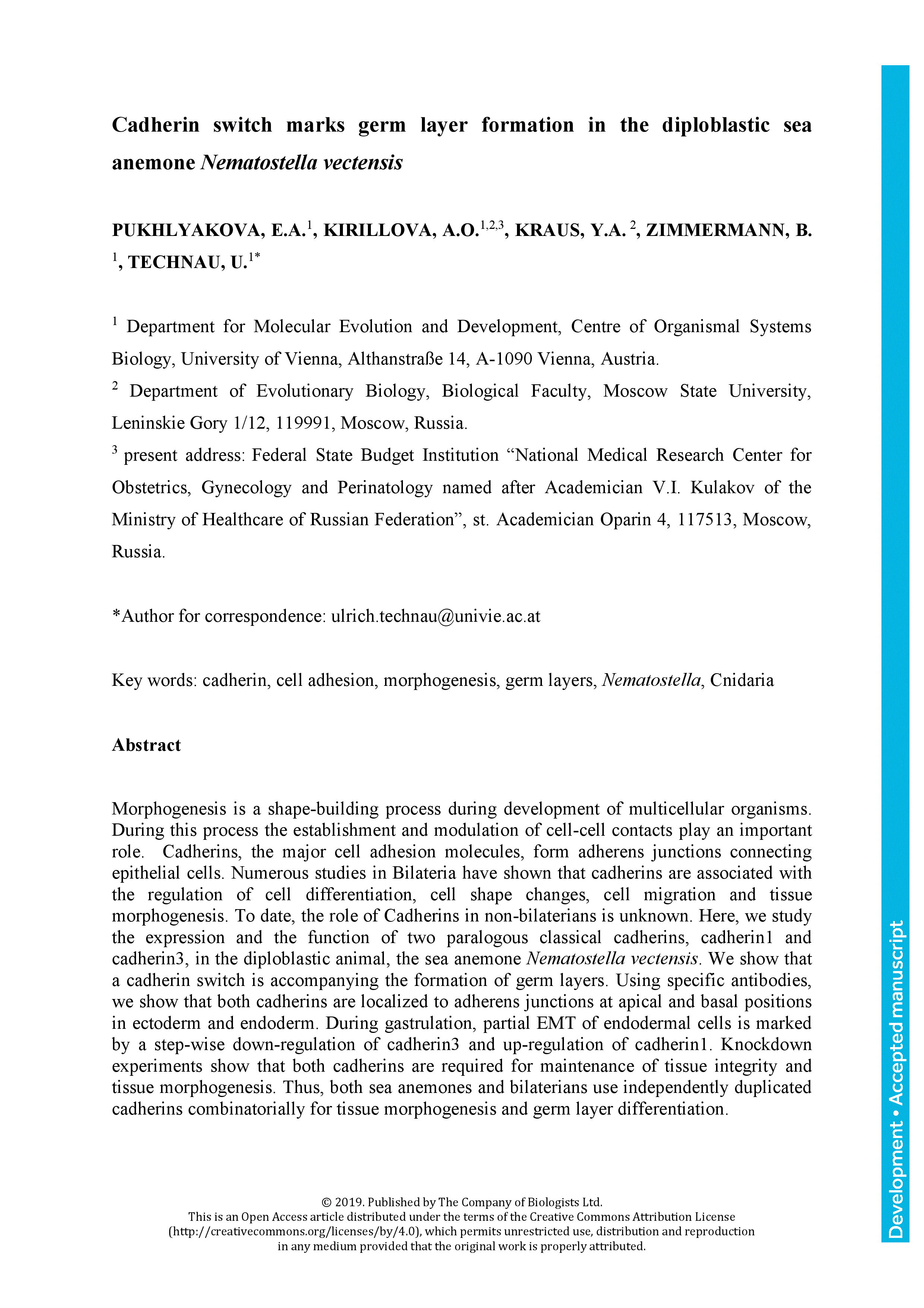Morphogenesis is a shape-building process during development of multicellular organisms. During this process the establishment and modulation of cell-cell contacts play an important role. Cadherins, the major cell adhesion molecules, form adherens junctions connecting epithelial cells. Numerous studies in Bilateria have shown that cadherins are associated with the regulation of cell differentiation, cell shape changes, cell migration and tissue morphogenesis. To date, the role of Cadherins in non-bilaterians is unknown. Here, we study the expression and the function of two paralogous classical cadherins, cadherin1 and cadherin3, in the diploblastic animal, the sea anemone Nematostella vectensis. We show that a cadherin switch is accompanying the formation of germ layers. Using specific antibodies, we show that both cadherins are localized to adherens junctions at apical and basal positions in ectoderm and endoderm. During gastrulation, partial EMT of endodermal cells is marked by a step-wise down-regulation of cadherin3 and up-regulation of cadherin1. Knockdown experiments show that both cadherins are required for maintenance of tissue integrity and tissue morphogenesis. Thus, both sea anemones and bilaterians use independently duplicated cadherins combinatorially for tissue morphogenesis and germ layer differentiation.
Cadherin switch marks germ layer formation in the diploblastic sea anemone Nematostella vectensis
Currently Viewing Accepted Manuscript - Newer Version Available
E. A. Pukhlyakova, A. O. Kirillova, Y. A. Kraus, B. Zimmermann, U. Technau; Cadherin switch marks germ layer formation in the diploblastic sea anemone Nematostella vectensis. Development 2019; dev.174623. doi: https://doi.org/10.1242/dev.174623
Download citation file:
Advertisement
Call for papers: Uncovering Developmental Diversity

Development invites you to submit your latest research to our upcoming special issue: Uncovering Developmental Diversity. This issue will be coordinated by our academic Editor Cassandra Extavour (Harvard University, USA) alongside two Guest Editors: Liam Dolan (Gregor Mendel Institute of Molecular Plant Biology, Austria) and Karen Sears (University of California Los Angeles, USA).
Choose Development in 2024

In this Editorial, Development Editor-in-Chief James Briscoe and Executive Editor Katherine Brown explain how you support your community by publishing in Development and how the journal champions serious science, community connections and progressive publishing.
Journal Meeting: From Stem Cells to Human Development

Register now for the 2024 Development Journal Meeting From Stem Cells to Human Development. Early-bird registration deadline: 3 May. Abstract submission deadline: 21 June.
Pluripotency of a founding field: rebranding developmental biology

This collaborative Perspective, the result of a workshop held in 2023, proposes a set of community actions to increase the visibility of the developmental biology field. The authors make recommendations for new funding streams, frameworks for collaborations and mechanisms by which members of the community can promote themselves and their research.
Read & Publish Open Access publishing: what authors say

We have had great feedback from authors who have benefitted from our Read & Publish agreement with their institution and have been able to publish Open Access with us without paying an APC. Read what they had to say.



